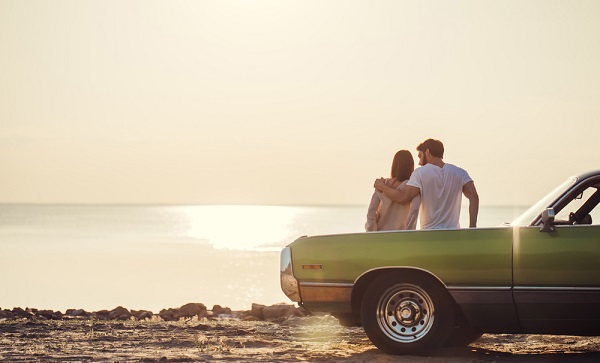Classic Car Market: Younger Drivers Take the Wheel

By: Jacquelyn Connelly
Baby boomers are no longer the most likely owners of classic cars in the U.S., according to a new book of data from Hagerty.
For the first time ever, last fall, Gen Xers and millennials started seeking vehicle values and classic vehicle insurance quotes more often than baby boomers and pre-boomers by a rough margin of 53% to 47%. And considering millennials comprise the nation’s largest generation, that means they’re likely to become the hobby’s single largest group within five years.
“What’s significant about that is there’s been this long-held myth in the automotive community that enthusiasm for cars was going to die with the baby boomer generation, and that’s simply not true,” says Jonathan Klinger, vice president of public relations at Hagerty. “But there are some differences within this shift that are important for independent agents to be considering in terms of the types of cars younger drivers are interested in and how they use them.”
State of the Market
Despite “a bit of a plateau over the past few years,” Ron Fiamma, global head of private collections, AIG Private Client Group, says there’s still plenty of “enthusiastic buying” in the classic car market. “Similar in some ways to the art market, where four or five years ago everything was going up, what you’re seeing now is that values for good cars, in good condition with good history that are desirable, are going up. That’s not necessarily lifting the entire market as it had been years ago, but things are still optimistic.”
Coming out of the 2007-2008 recession, “specific segments of the market, like Porsches and high-end European racecars, were for several years having these double-digit annual value increases, to the point where it was starting to get a little eye-watering,” says Klinger, who notes that currently, the most active segment of the market is entry-level classics. “That has leveled off going on about three years now. It’s not that it’s retreated—it’s just leveled off.”
“There’s been some talk about diminished sales in the highest-value vehicles as an indicator that the collector car market is in danger, or as a signal of a pending economic correction in the U.S., but we still see collector cars as a smart investment for the passionate collector,” agrees Brook McGuire, strategy lead for specialty products at Safeco. “We think the challenge will be identifying vehicles that will appeal to multiple generations for maximum long-term gain.”
As baby boomers age further into their retirement years, “they’re finding that their kids and grandkids don’t want their vehicles, which were their own favorite vehicles from childhood,” McGuire explains. So as Generation X and millennial collectors “enter their maximum income-earning years,” the cars that are perceived and treated as collectibles are getting younger and younger—and “that’s going to influence pricing for vehicles over the long-term.”
Klinger says some classics stand the test of time: “The top most popular vehicles—Corvettes, Mustangs, Camaros, names you’re familiar with—those transcend all generations. There’s lots of them out there, and they have multigenerational appeal. Everybody alive today can think of the Ford Mustang in some context because it’s been produced continuously for more than 50 years.”
But for younger collectors, who range from the oldest Gen Xers born in the mid-1960s through the oldest millennials born in the mid-1980s, “we’re seeing a lot more vehicles from the 1970s-1980s,” McGuire says. “The 1980 Camaro is very popular, and as millennials come to age, we’re going to see the Toyota FJ, the Dodge Hellcat—even the Toyota Supra from the late ’90s is now collectible, whereas 10 years ago, it was just old.”
Klinger adds that interest in vintage pickups and SUVs is significantly higher among younger generations compared to older generations, and that whereas “an older collector’s idea of an inexpensive, fun-to-own roadster would be a British Triumph or an MG roadster, to the younger generation that is absolutely a Mazda Miata, a Nissan 370Z—Asian imports have replaced British sports cars in terms of those widely accessible fun cars.”
Younger generations are also “more tolerant of certain types of modifications,” Klinger observes. No surprise, then, that heavily modified cars continue to increase in value.
“The trend now is restored and modifieds, or resto mods, and pro touring cars that basically handle and drive like a performance car,” explains Rick Drewry, senior claims specialist, Collector Vehicle & Motorcycle, American Modern Insurance Group. “It’s an old Chevelle or Camaro or Barracuda, but it’s got all the modern-day technology built into it.”
Gen X and millennial collectors “seem to like that aspect of the collector car market more so than getting an all-numbers matching car that sits in your garage covered up and you just look at it, and you don’t want to drive it because you’re worried about decreasing the value by putting miles on,” Drewry explains. “The resto mod side of the market is growing a lot.”
What it Means for You
As the collector car market evolves, “these cars are going to be used in different ways that aren’t traditional,” McGuire says. “Younger collectors are more inclined to drive and use their vehicles, whereas an older owner may have kept the vehicle in a garage and looked at it once a week to rub it with a microfiber cloth and cover it back up again. We’re seeing more customers take their vehicles out for track day, for off-road use—exposures that aren’t traditionally contemplated in classic car rating.”
“Younger generations use their vehicles more,” Klinger agrees. “They’re interested in events that involve driving the cars. The idea of spending many hours prepping their car to drive it onto the show field and sit in a lawn chair next to it all day is less attractive than driving it to a Cars and Coffee Meetup on a Saturday morning and having some fun with a bunch of likeminded people.”
It’s crucial, then, for “agents to ask questions about how the vehicle is used and how much it’s driven,” McGuire points out.
“The call to action for agents is that when a client or prospect comes to them with multiple vehicles, if you see a pickup or SUV from the ’80s or ’90s, ask that extra question—‘Why do you own this? How do you use this?’” Klinger says. “That vehicle is no longer just the truck that sits out back and hauls leaves in the fall. People have those because they’re passionate about them.”
But is the insurance industry even ready to respond to these shifting trends? “If you look at historically how the insurance industry treated collector cars, going back multiple decades, it literally used to be restricted to parade use and hobby events only,” Klinger points out. “That old line of thinking is alive and well among traditional collectors, who remember the days when it was like, ‘You better not stop at the ice cream shop on your way home from the car show, because if something happens, it’s not going to be covered.’”
Today, coverage solutions are slowly becoming available for insureds who use their classic cars more regularly than those types of strict policies would allow. Safeco, for example, now allows a classic car to be a daily driver; Hagerty is currently rolling out an endorsement for seasonal daily drivers as well, and also offers a track day policy for specific high-performance drivers education and time-trial events.
“It’s about reassuring that customer, ‘We know you own this because you love to use the vehicle,’” Klinger explains. “If they own it because they’re passionate about it, you don’t need to tell them, ‘Hey, it’s wintertime—you shouldn’t drive your car,’ or, ‘Hey, don’t leave it in a large supermarket parking lot unattended for five hours.’ They instinctively don’t want to. This is a space where you can extend that combination of trust and freedom.”
But overall, “the market’s not there yet,” McGuire says. “There are some companies that still say you can only use your car to go back and forth to car shows. Classic car policies are going to have to evolve over time to keep up with this new generation of car owners.”
Jacquelyn Connelly is IA senior editor.










